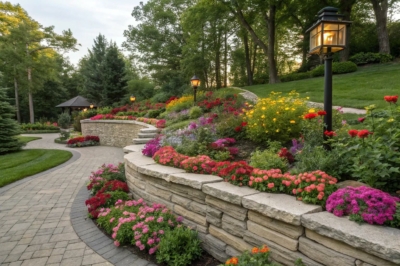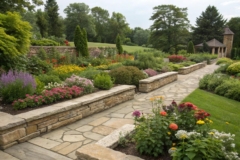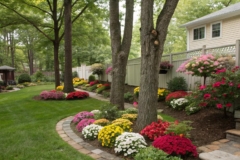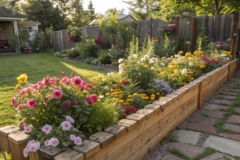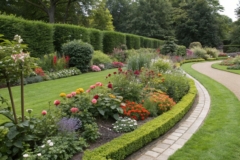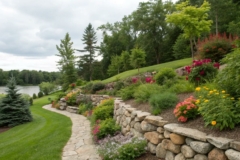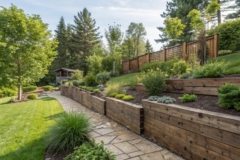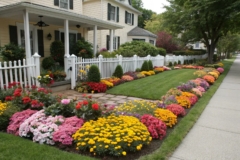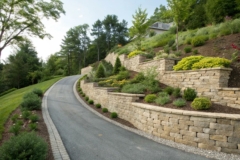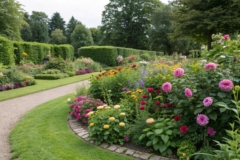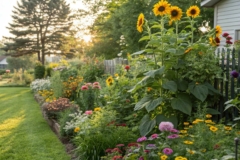1. Mixed Material Walls
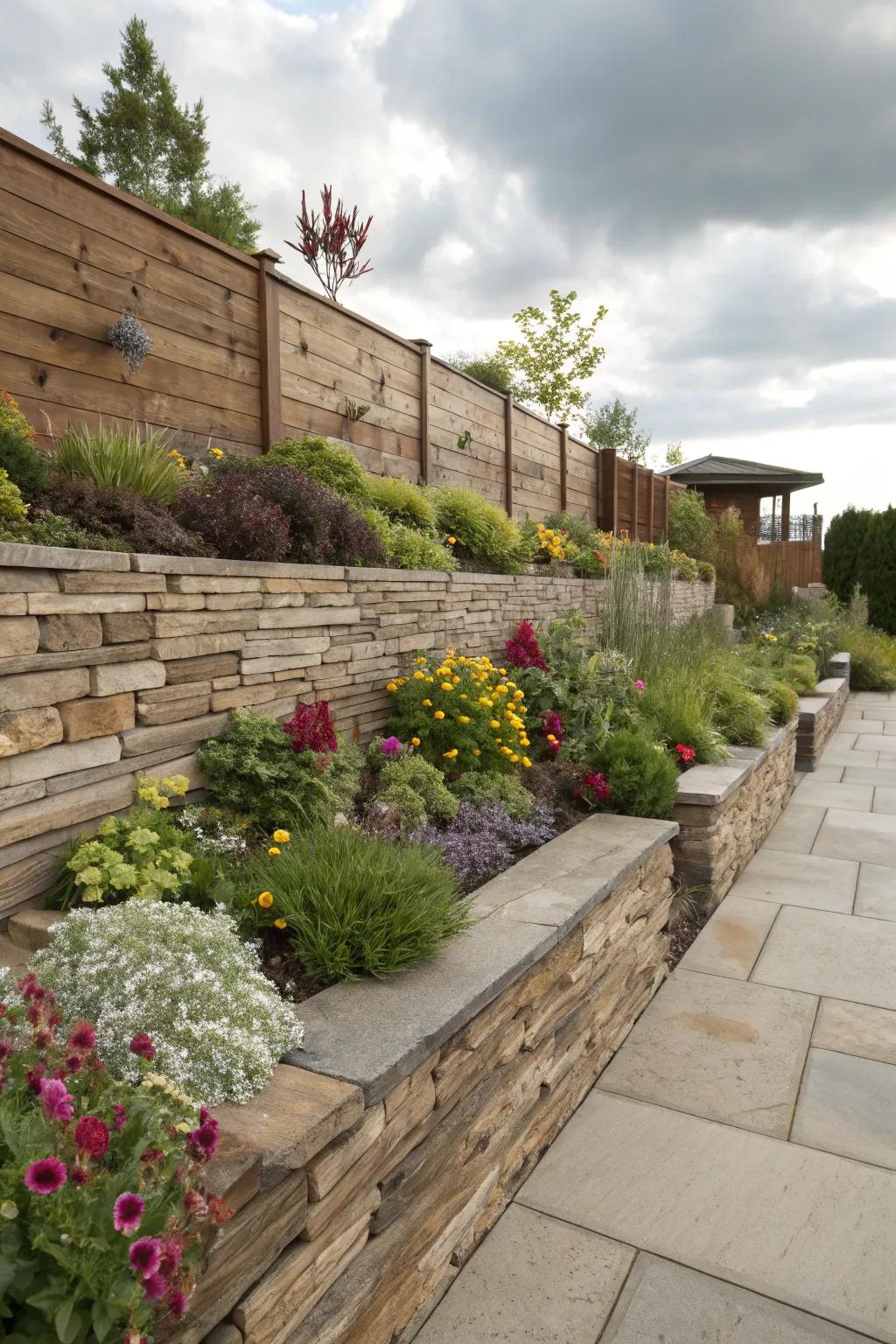
Mix stone and wood for a textural contrast that’s sure to catch the eye. It’s a great way to add interest and character to your garden.
These products might be useful:
- Natural Stone Veneer Panels: Enhance your garden’s charm with these durable stone veneers for a timeless, elegant touch.
- Outdoor Wooden Fence Panels: Add warmth and privacy with these stylish, easy-to-install wooden fence panels for your yard.
- Weather-resistant Wood Stain: Protect your wooden fences with this long-lasting stain, perfect for outdoor durability and beauty.
2. Reclaimed Materials
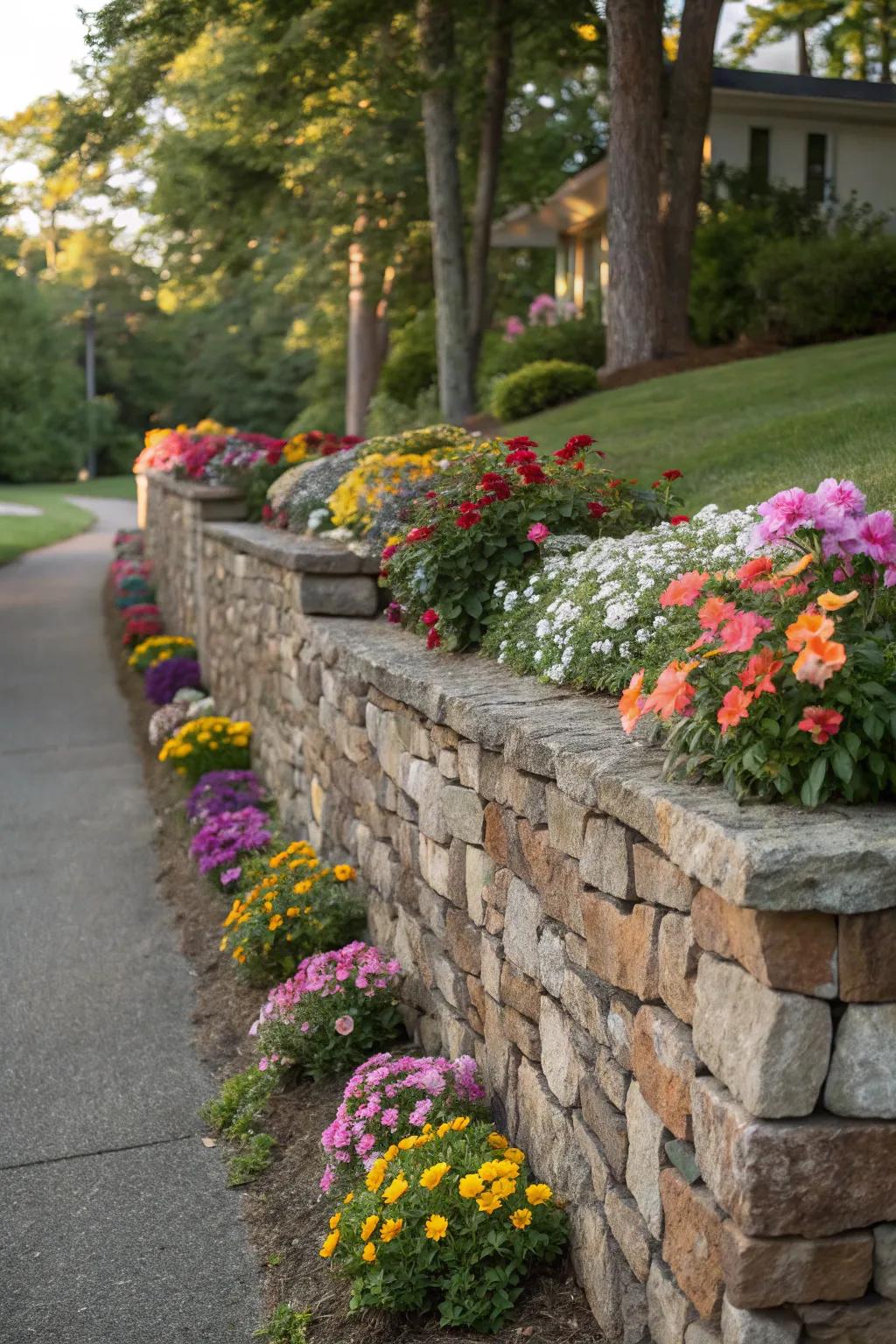
Using reclaimed bricks or stones can give your garden a vintage charm. Plus, it’s a sustainable and budget-friendly option.
Might be a good match:
- Reclaimed Brick Packs: Enhance your garden’s charm with durable reclaimed brick packs for an eco-friendly landscape design.
- Natural Stone Wall Kits: Craft an elegant flower bed wall with these versatile natural stone wall kits. Easy and stylish!
- Garden Edging Stones: Define your flower beds beautifully using weather-resistant garden edging stones for a vintage look.
3. Steel Edging
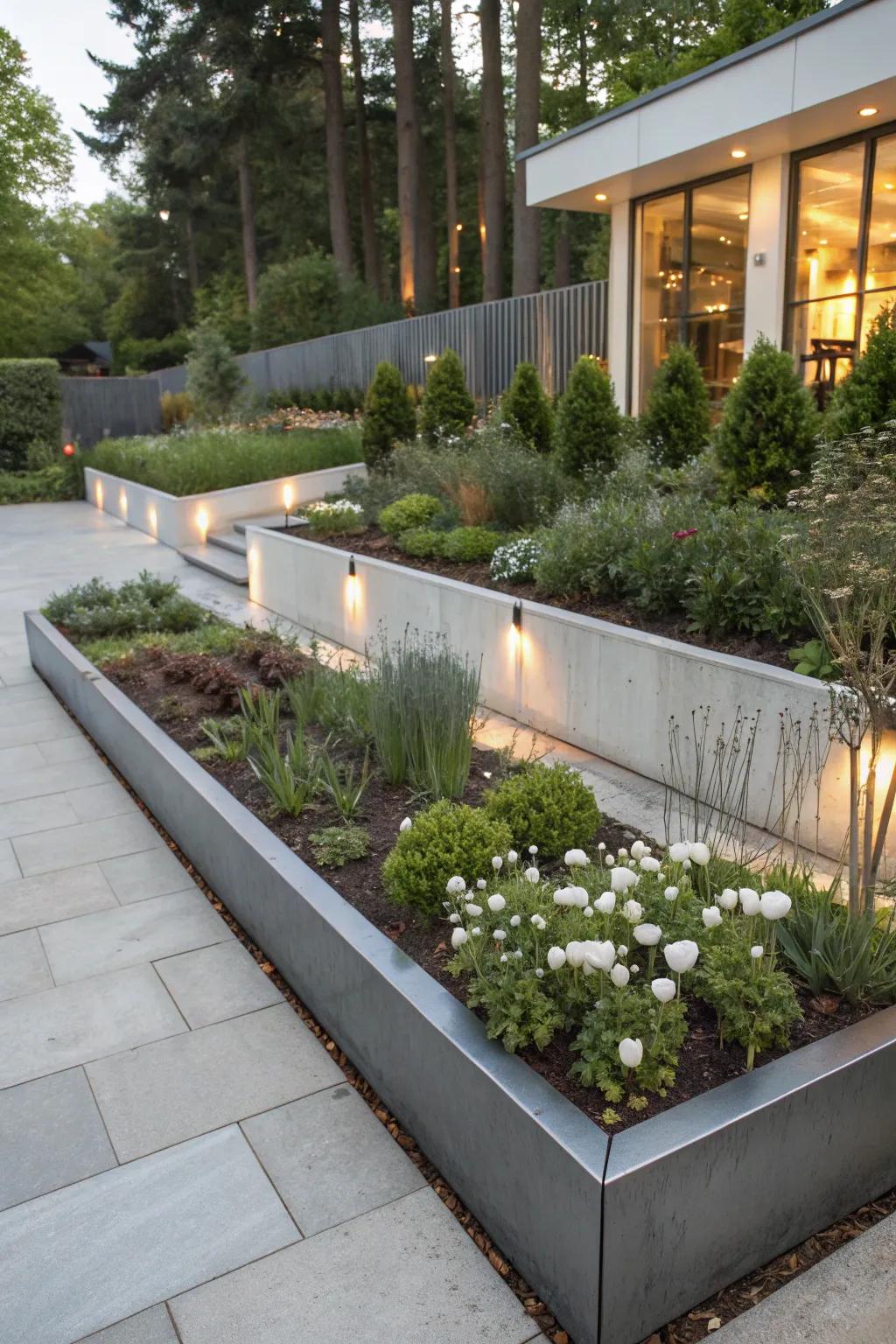
For a sleek, modern vibe, steel edging is hard to beat. It’s durable and gives your flower beds a polished, contemporary look.
Possibly helpful picks:
- Steel Landscape Edging Kit: Upgrade your garden with this durable edging kit, offering a sleek, modern finish. Easy to install.
- Modular Steel Garden Edging: Enhance your flower beds with modular steel edging for a clean and contemporary look today.
- Rust-Resistant Steel Edging: Invest in rust-resistant steel edging for long-lasting beauty and structure in your garden.
4. Integrated Lighting
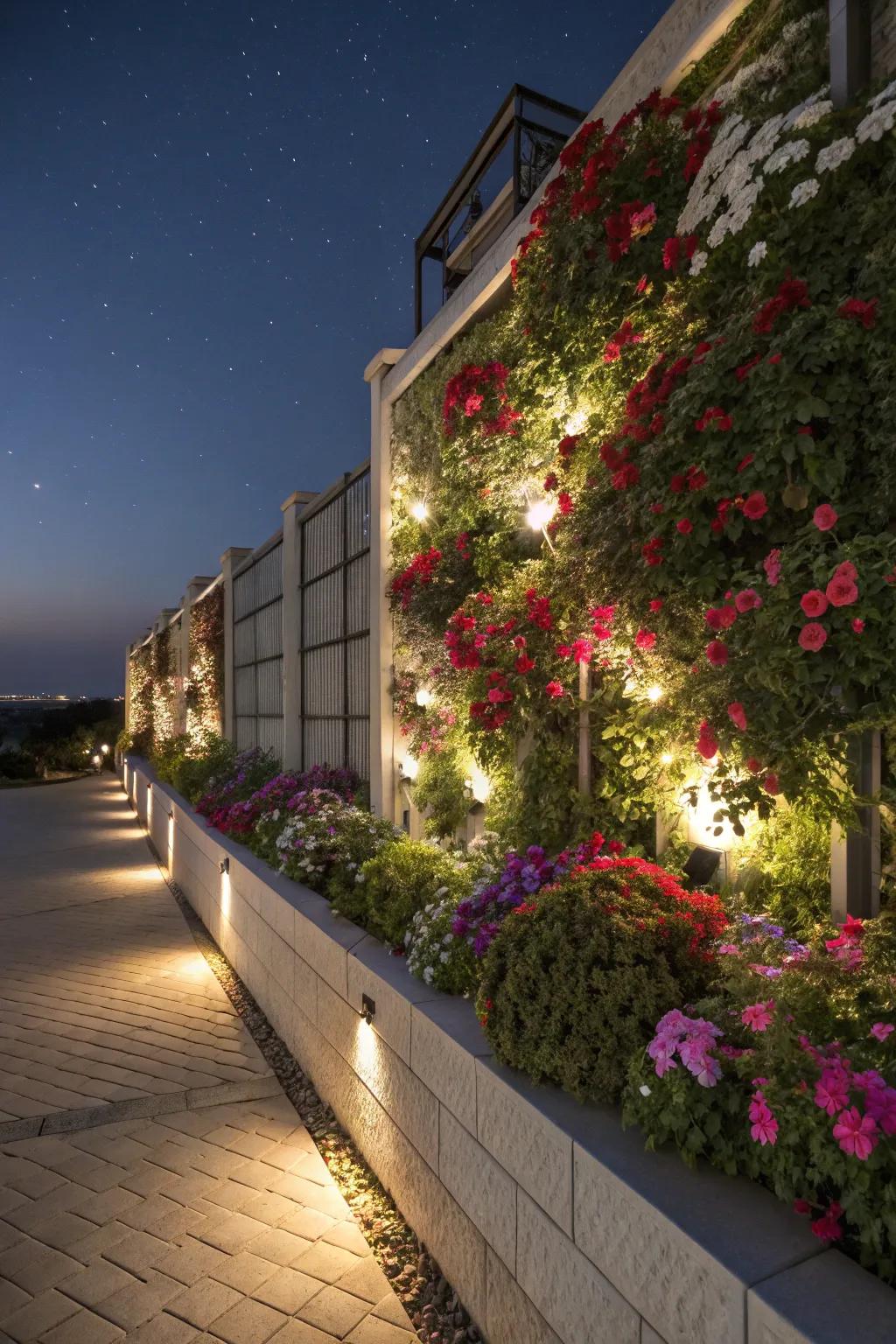
Add integrated lighting to your flower bed walls for nighttime magic. It highlights the beauty of your blooms and enhances your garden’s ambiance.
A few choices to try:
- Outdoor LED Garden Spotlights: Illuminate your flower beds with adjustable spotlights for vibrant nighttime effects. Enjoy your garden’s beauty.
- Solar-Powered Pathway Lights: Enhance your garden pathways with eco-friendly solar lights for a magical evening glow.
- Waterproof LED Strip Lights: Add flexible LED strip lights to flower beds for customizable and striking lighting designs.
5. Stone and Water Features
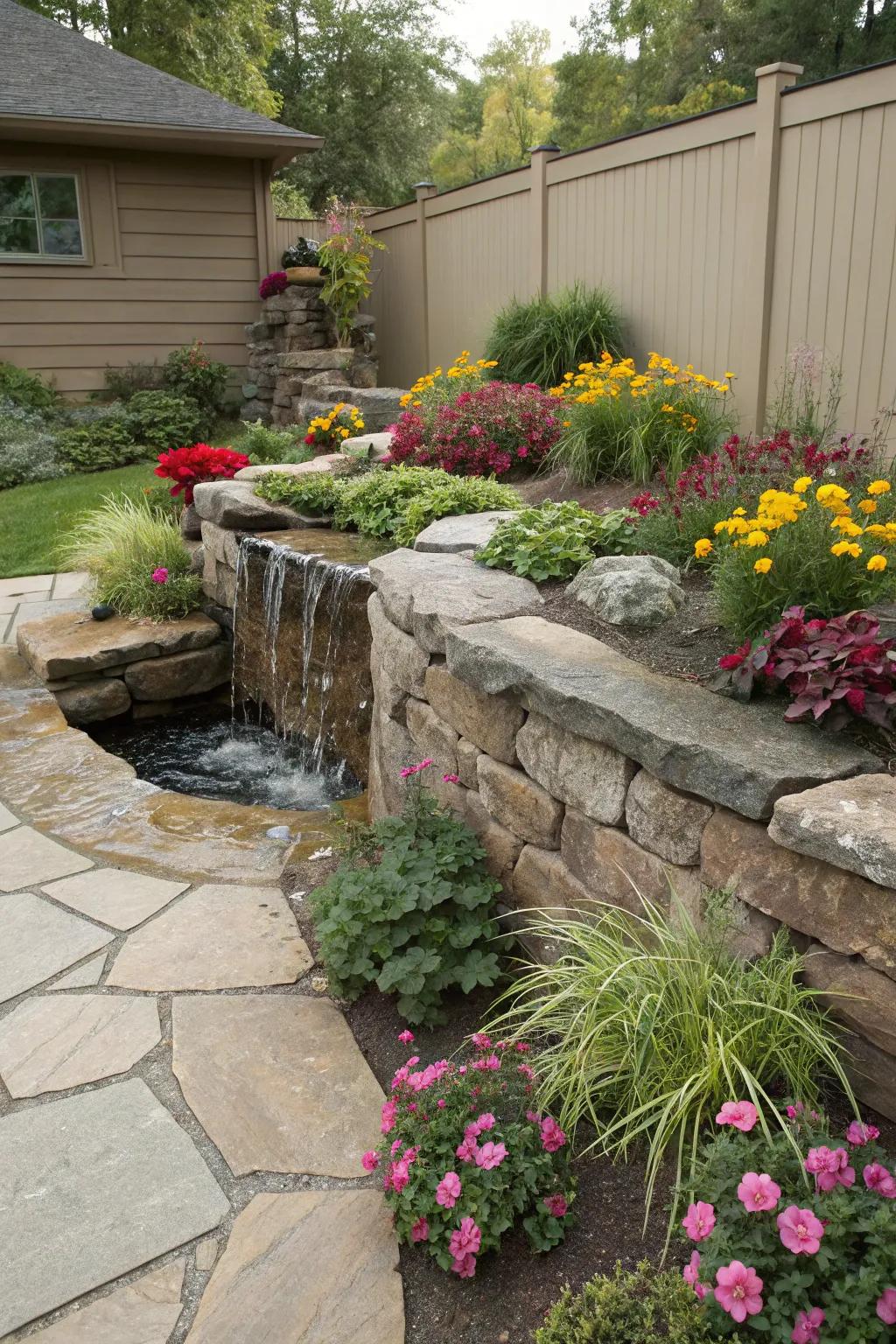
Integrate a small water feature into your stone wall for a tranquil vibe. The soothing sound of water can transform your garden into a peaceful retreat.
Consider these options:
- Outdoor Waterfall Spillway Kit: Transform your garden with this spillway kit, adding soothing sounds to your stone wall.
- Garden Water Pump: Enhance your water feature’s flow with this efficient and reliable garden water pump.
- LED Pond Lights: Illuminate your water feature at night with these energy-efficient LED pond lights.
6. Painted Concrete Walls

Spruce up simple concrete walls with a splash of paint. It’s an easy and creative way to add a pop of color and make your garden truly your own.
Possibly handy products:
- Outdoor Acrylic Paint Set: Transform your concrete wall with vibrant colors. Ideal for outdoor murals and garden designs.
- Weatherproof Paint Sealer: Protect your painted masterpiece from the elements. Ensure long-lasting vibrancy and durability.
- Paintbrush Set for Detailed Artwork: Get creative with precision brushes perfect for details and intricate designs on walls.
7. Curved Stone Wall
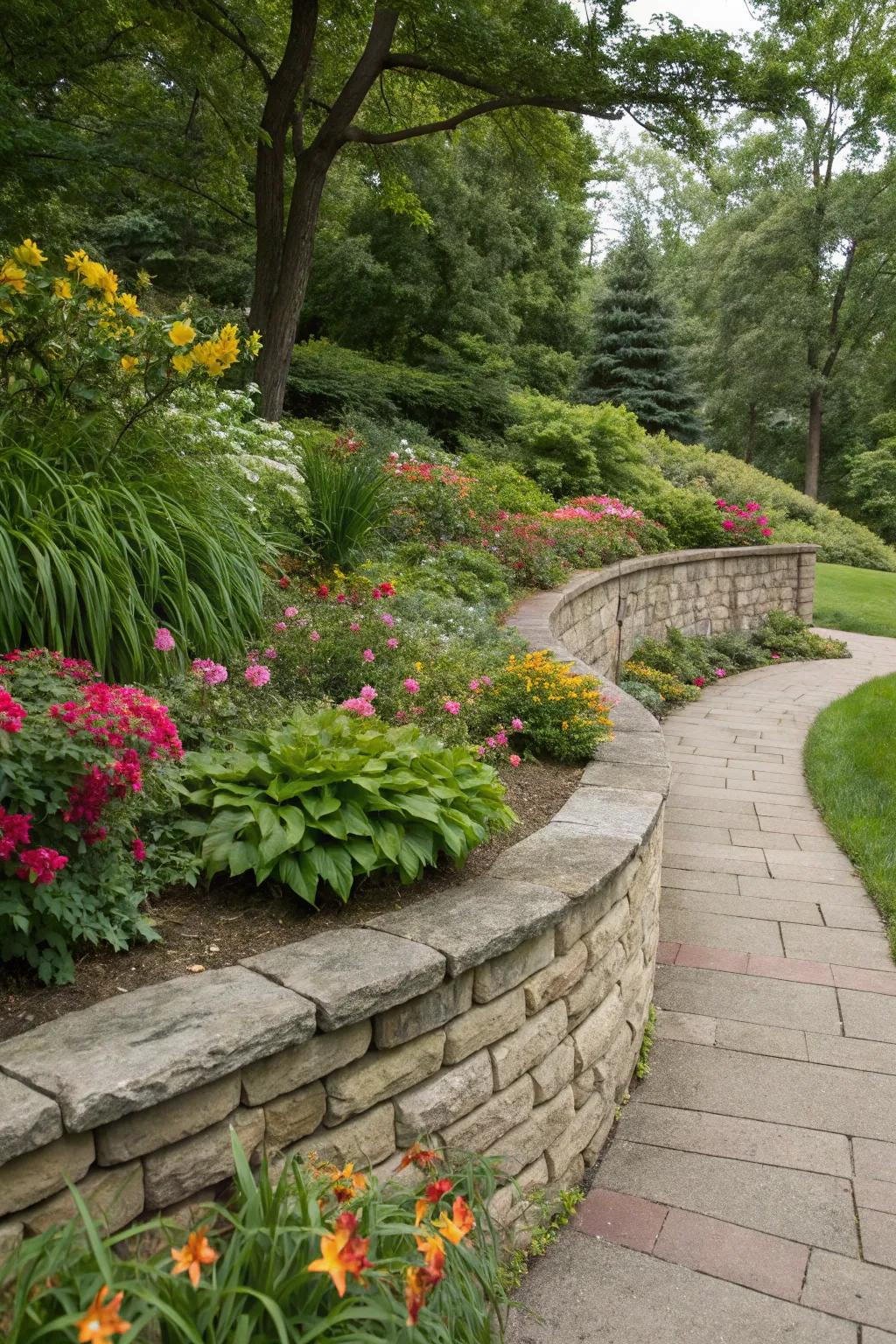
One of my favorite tricks in the garden is using curved stone walls to create a natural flow. They blend seamlessly into the landscape and make any flower bed feel like a fairytale nook.
May just do the trick:
- Garden Stone Wall Blocks: Create a stunning curved wall using these durable stone wall blocks in your garden.
- Landscape Fabric for Gardening: Protect your garden by laying down high-quality landscape fabric beneath your stone walls.
- Outdoor Decorative Stone Sealant: Enhance the longevity of your stone walls with this protective outdoor stone sealant.
8. Natural Log Walls
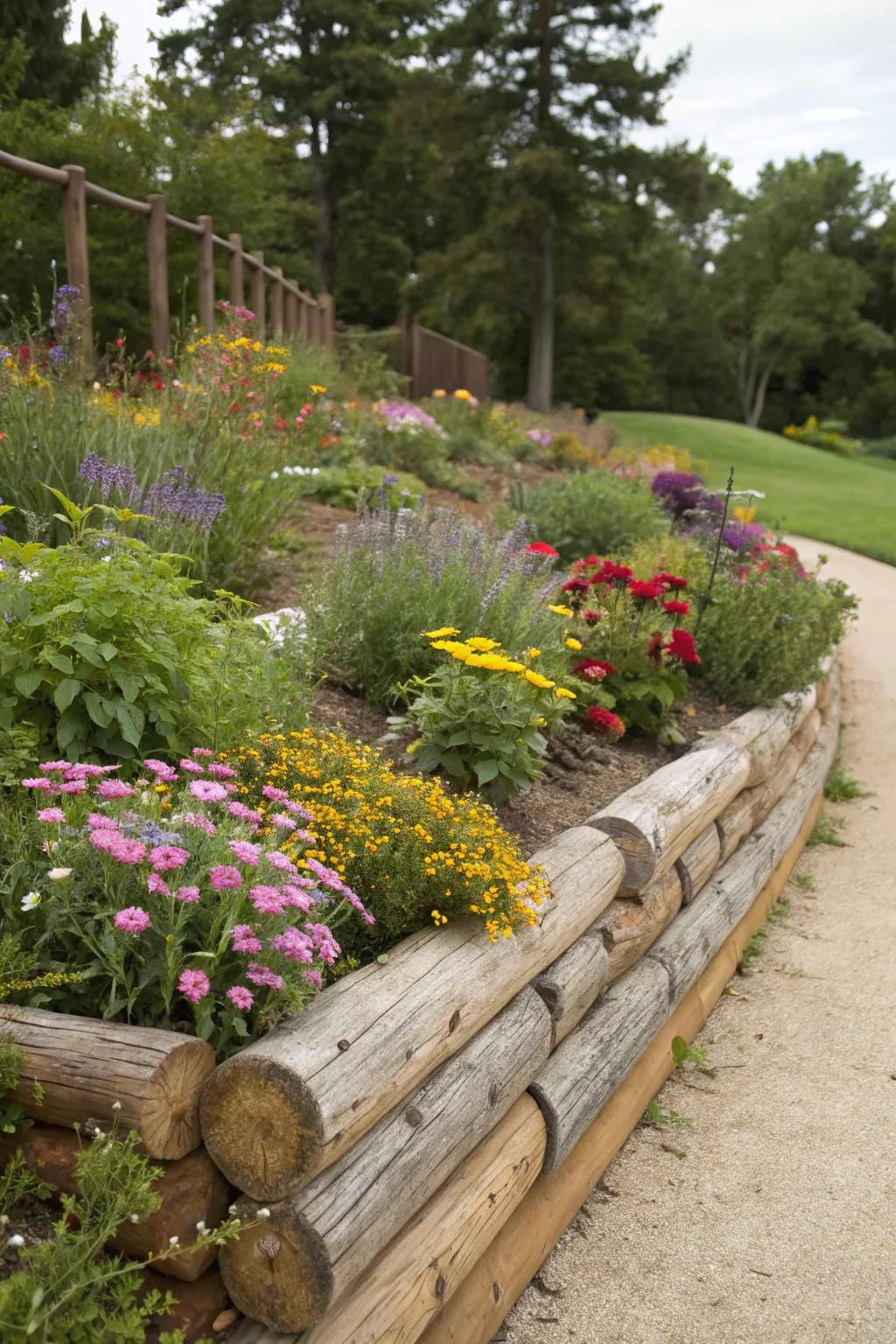
For those who love a natural look, log walls are a wonderful choice. They offer a warm, earthy feel and can even attract beneficial wildlife.
Maybe worth checking out:
- Landscape Timber: Enhance your garden’s natural look with durable landscape timber for beautiful, rustic log walls.
- Wood Preservative: Protect your log walls from weathering with a high-quality wood preservative for lasting beauty.
- Garden Edging Log Kit: Create seamless garden borders easily with a convenient log kit designed for natural aesthetics.
9. Rustic Stone Edging
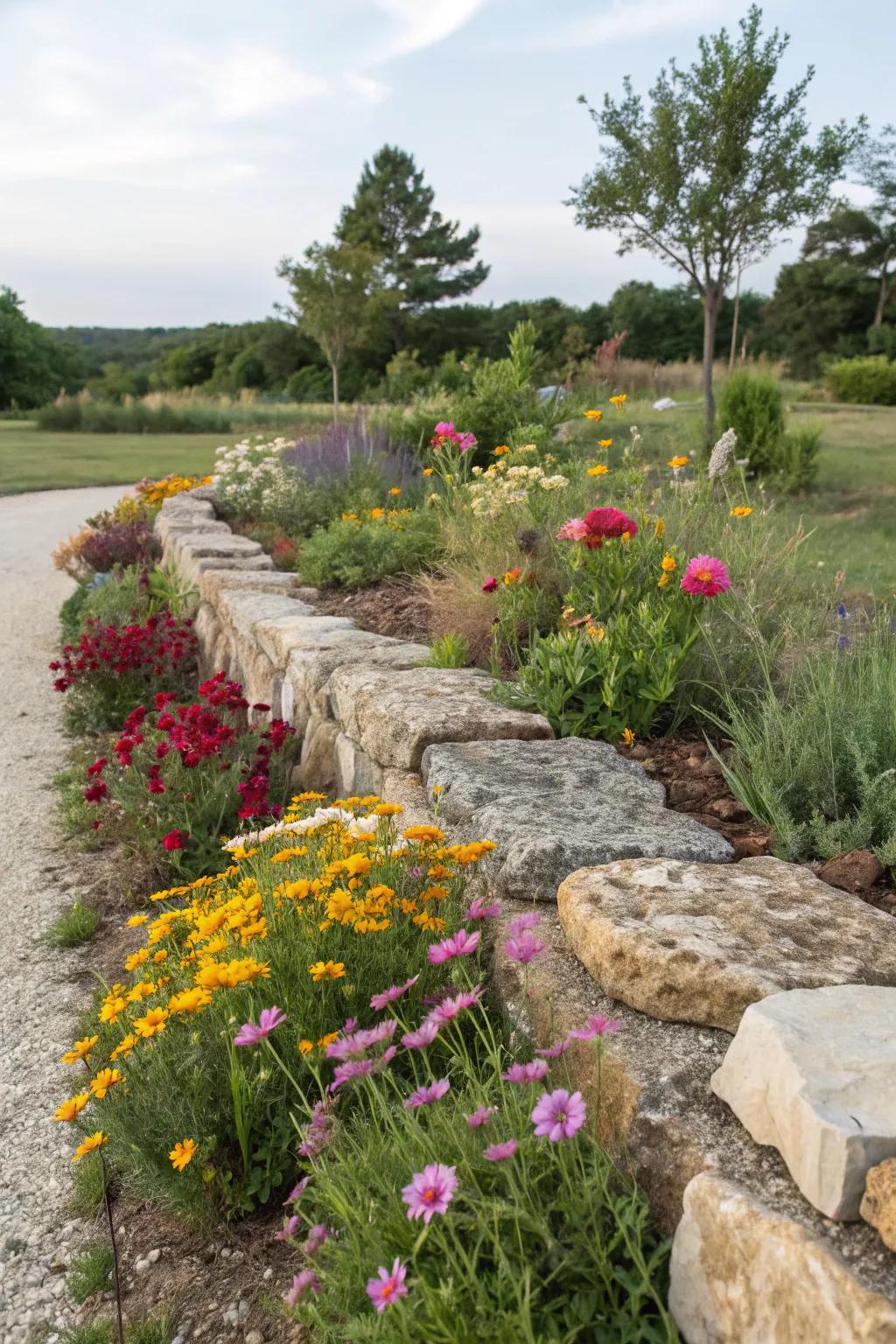
Use rustic stones to edge your flower beds for a charming countryside look. They’re easy to arrange and add a touch of old-world elegance.
These products might help:
- Natural Stone Edging Kits: Enhance your garden’s charm with easy-to-install natural stone edging kits.
- Decorative Pebble Stones: Use decorative pebble stones for a refined touch to your garden pathways.
- Rustic Garden Path Lighting: Illuminate your rustic stone paths with charming garden lighting solutions.
10. Gabion Walls
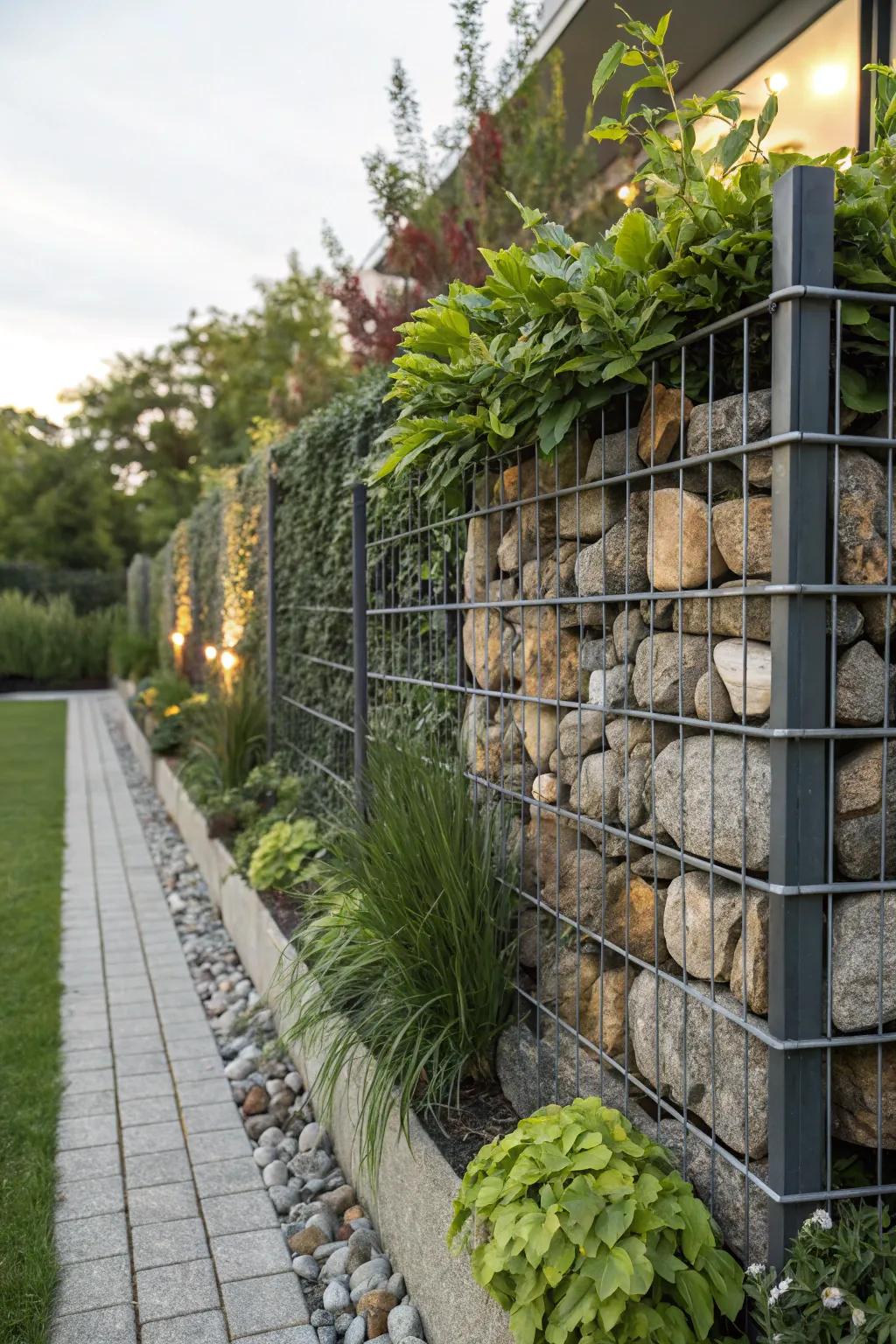
Gabion walls are a modern and industrial option that look fantastic with a mix of rocks and greenery peeping through. They’re fun, functional, and surprisingly easy to DIY!
You might give these a try:
- Gabion Cage Kit: Transform your garden with a durable gabion cage, perfect for creating stylish, modern walls.
- Decorative River Rocks: Add natural beauty to your gabion walls with smooth, decorative river rocks.
- Landscape Fabric: Ensure longevity and weed prevention for your gabion wall with durable landscape fabric.
11. Colorful Mosaic Walls
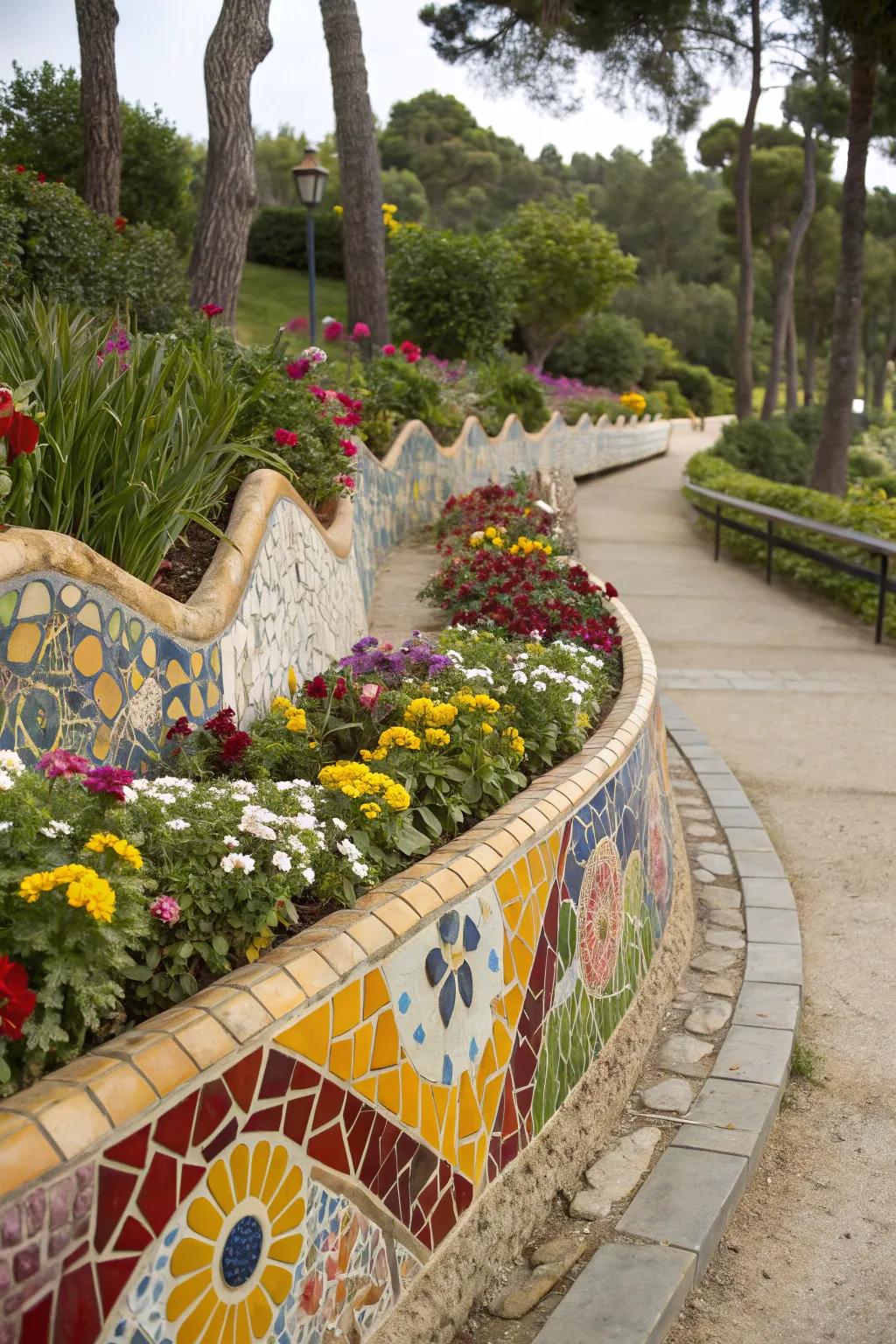
Why not get a bit artsy and create a colorful mosaic wall? It’s a unique way to add personality and a splash of color to your garden.
Check these products out:
- Mosaic Tile Craft Kit: Unleash your creativity with vibrant mosaic tiles, perfect for colorful garden walls. Start designing today!
- Outdoor Mosaic Adhesive: Secure your artistic creations with strong adhesive, ideal for lasting outdoor mosaic projects.
- Grout Sealer for Mosaic Art: Protect your mosaic masterpiece with durable grout sealer. Enhance longevity and appearance effortlessly.
12. Integrated Seating
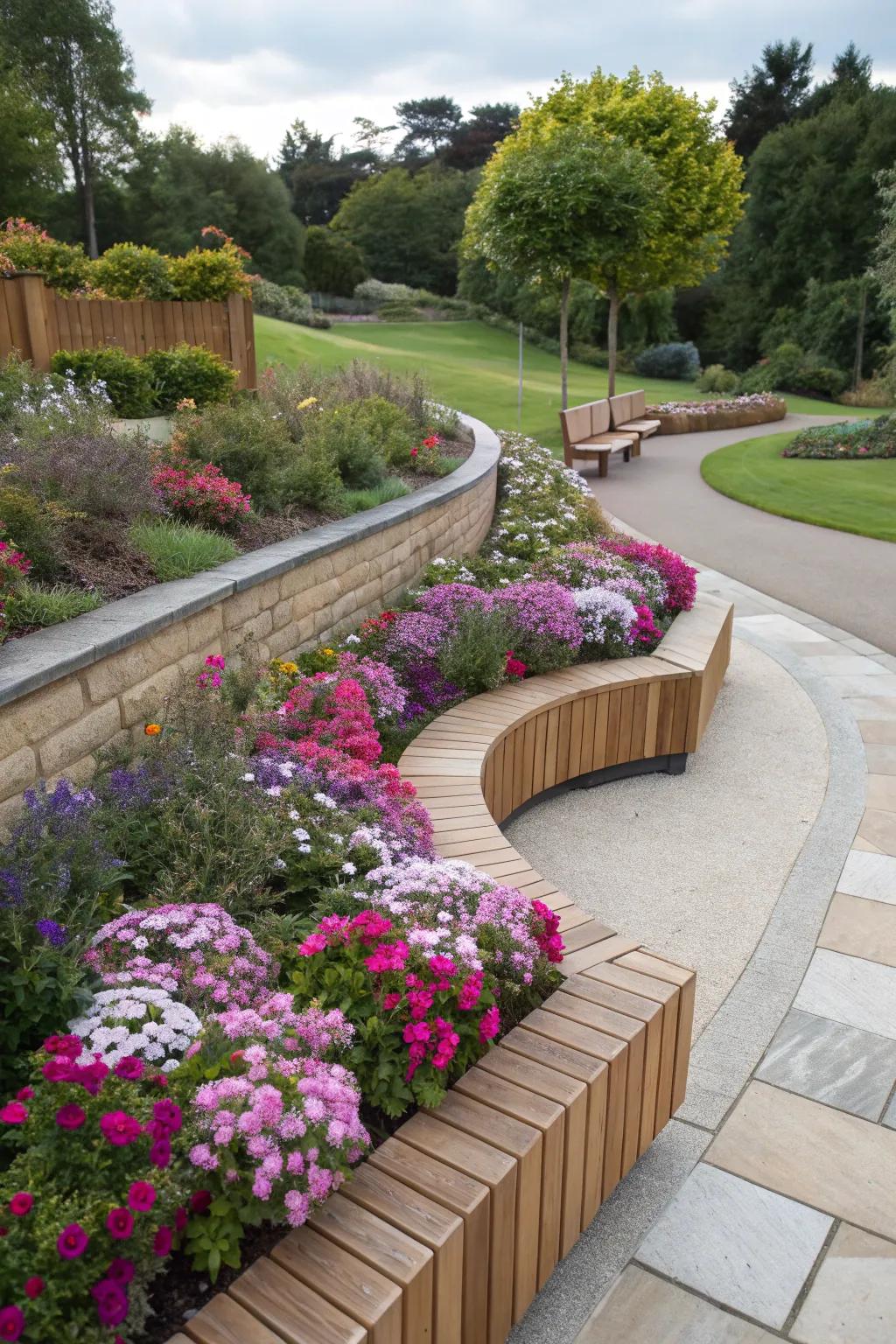
Why not combine seating with your flower bed walls? Built-in benches provide the perfect spot to sit and enjoy your blooms on a sunny day.
Products that could assist:
- Outdoor Wooden Bench: Enhance your garden with this elegant bench, perfect for enjoying your lovely blooms.
- Weatherproof Bench Cushion: Add comfort with weatherproof cushions, ensuring cozy seating even on damp days.
- Garden Solar Lights: Illuminate your flower bed and seating area for evening enjoyment with solar garden lights.
13. Brick Wall Charm
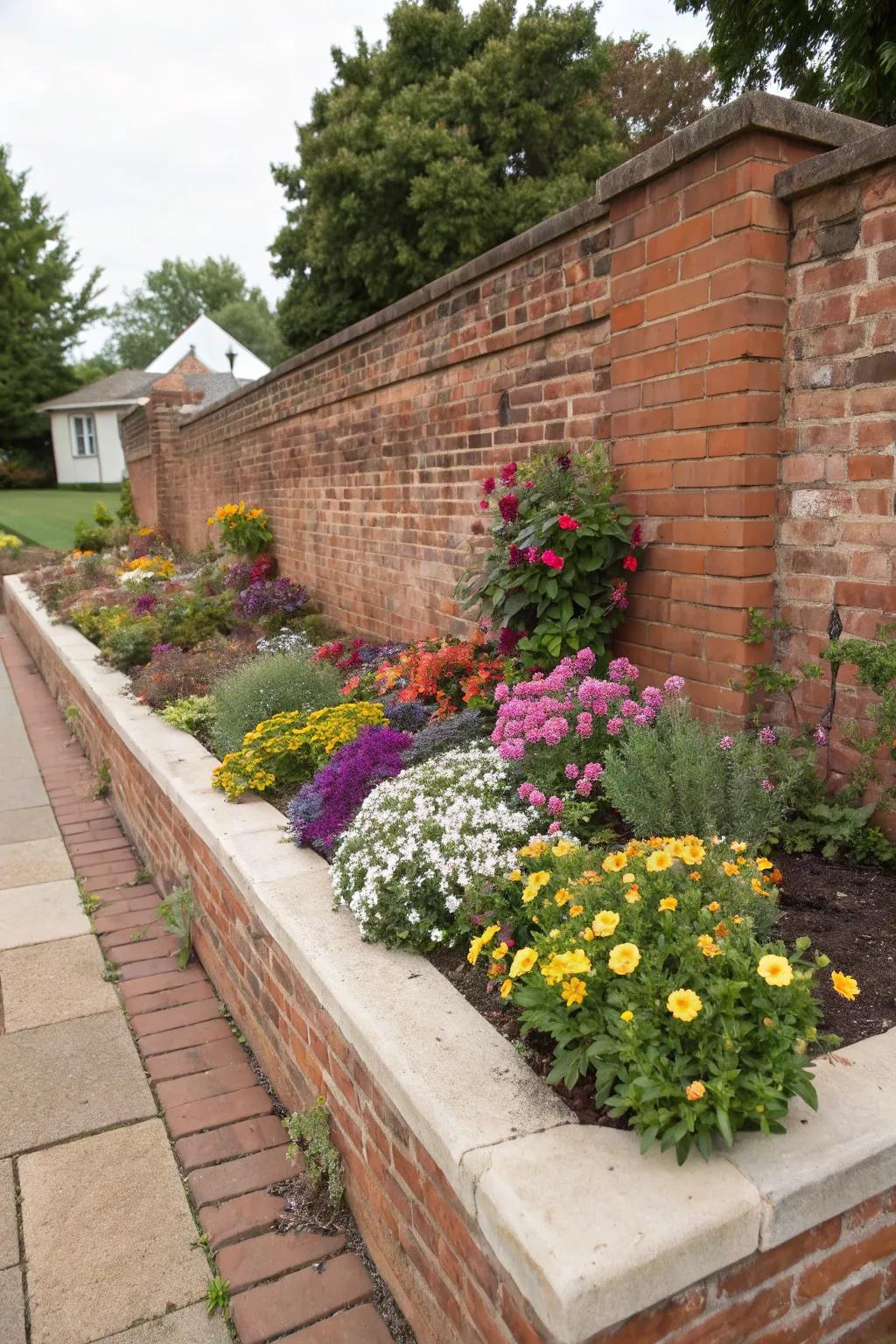
A classic brick wall never goes out of style. It adds a warm and rustic charm to your flower beds, perfect for both modern and traditional homes.
A few things you might like:
- Outdoor Solar Garden Lights: Illuminate your brick wall garden bed with these eco-friendly solar lights. Enhance elegance effortlessly.
- Decorative Trellis for Climbing Plants: Support your climbing plants with a stylish trellis, adding height and interest to your wall.
- Waterproof Outdoor Cushions: Add comfort and color to your garden seating area with durable, weather-resistant cushions.
14. Tiered Flower Beds
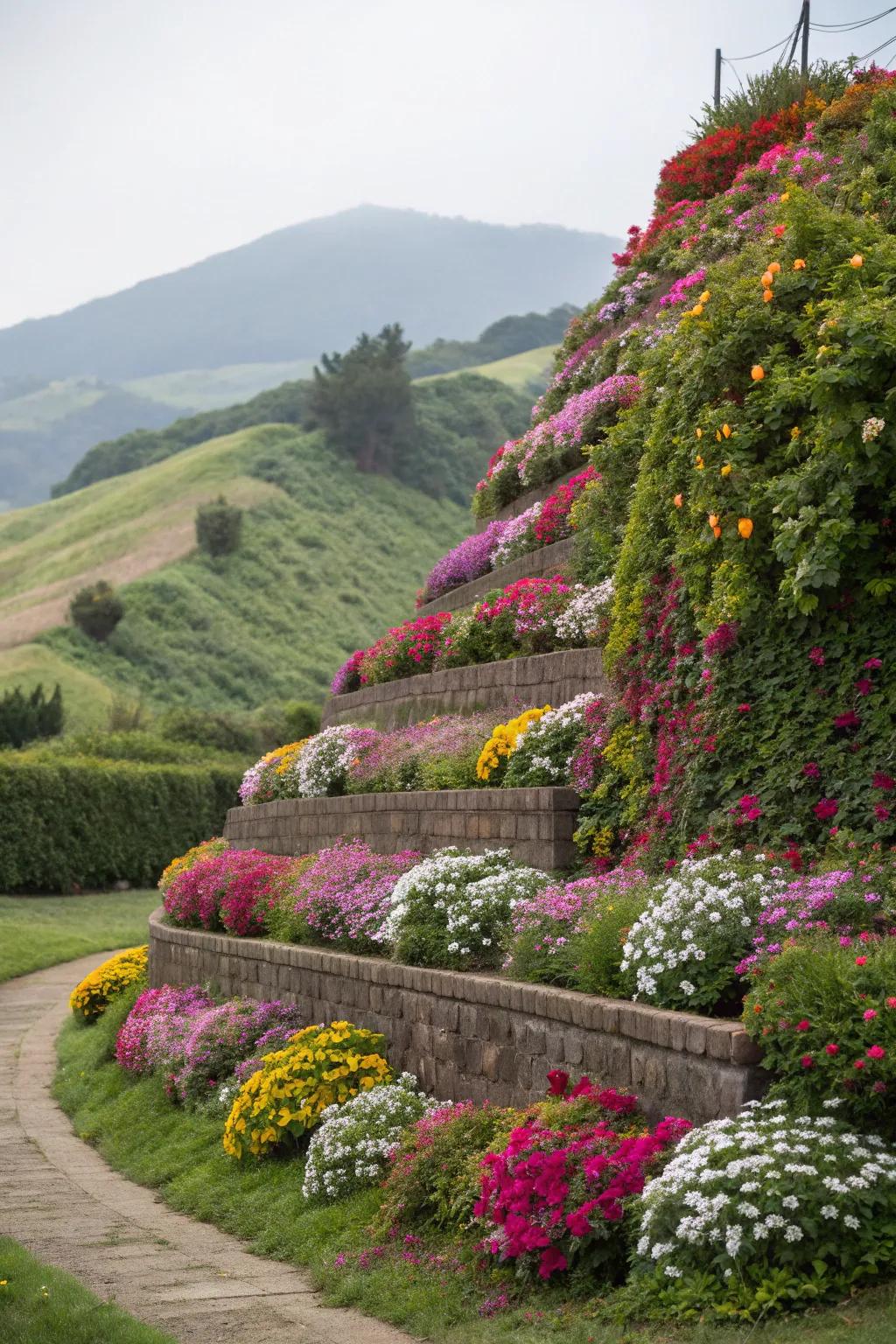
If you’re on a slope, consider tiered flower beds. They not only prevent erosion but also give you the chance to layer different plants for a dramatic effect.
Give these a look:
- Garden Retaining Wall Bricks: Elevate your garden’s look by using these bricks to create stunning tiered flower beds.
- Terrace Planter Boxes: Add depth to your landscape with versatile planter boxes perfect for tiered arrangements.
- Slope Stabilization Grid: Prevent erosion while showcasing tiered gardens with this durable slope stabilization grid system.
15. Wooden Sleepers
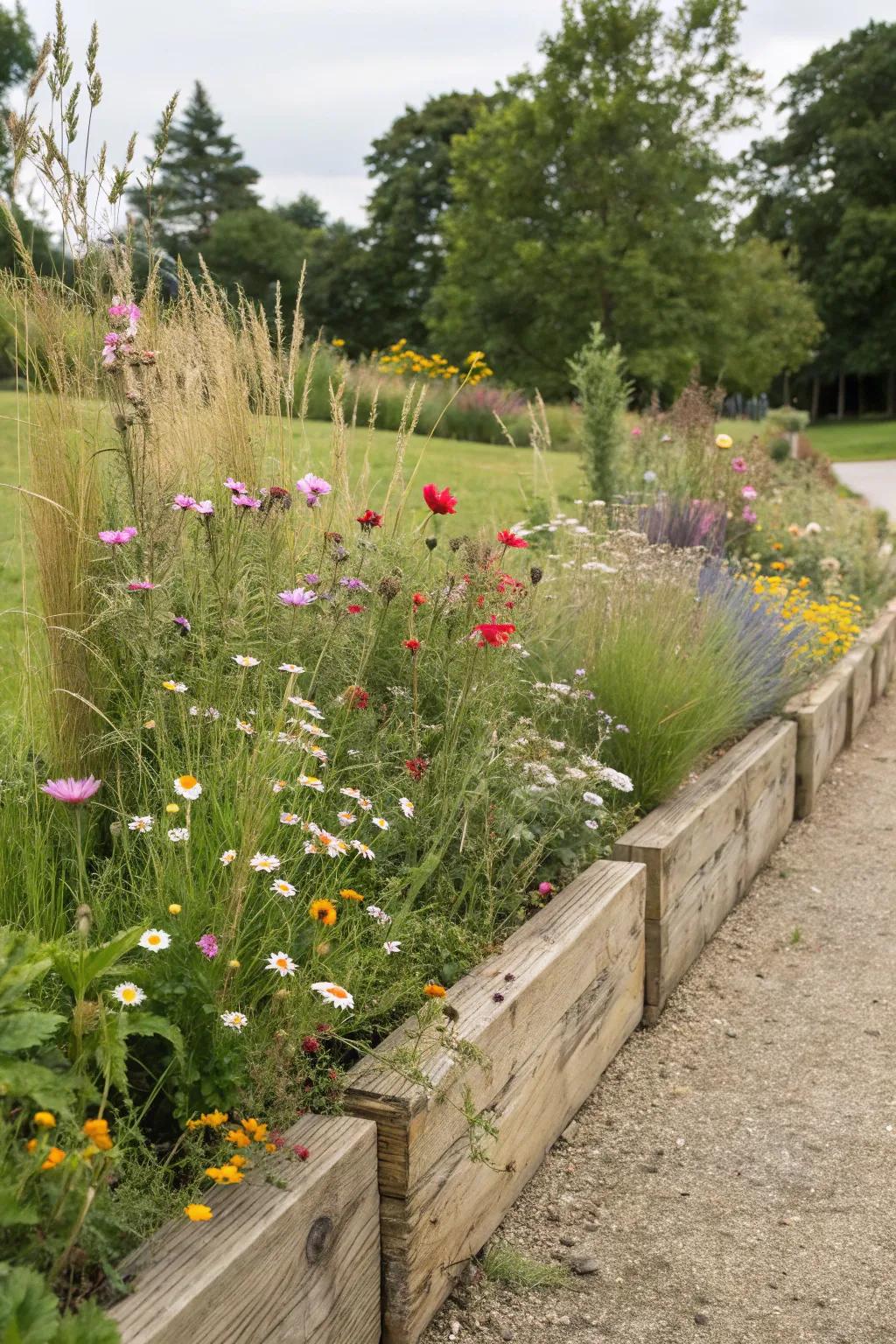
For a touch of rustic and eco-friendly flair, use wooden sleepers. They’re versatile and add a cozy vibe to any garden space.
Try these:
- Reclaimed Wood Garden Sleepers: Enhance your garden’s rustic charm with eco-friendly, durable sleepers. Perfect for stylish flower beds.
- Pressure-Treated Wooden Sleepers: Secure your garden with long-lasting, pressure-treated sleepers. Ideal for sturdy, attractive flower beds.
- Rustic Oak Wooden Sleepers: Create a cozy garden space with versatile oak sleepers. Perfect for adding character and charm.
16. Herb Wall Garden
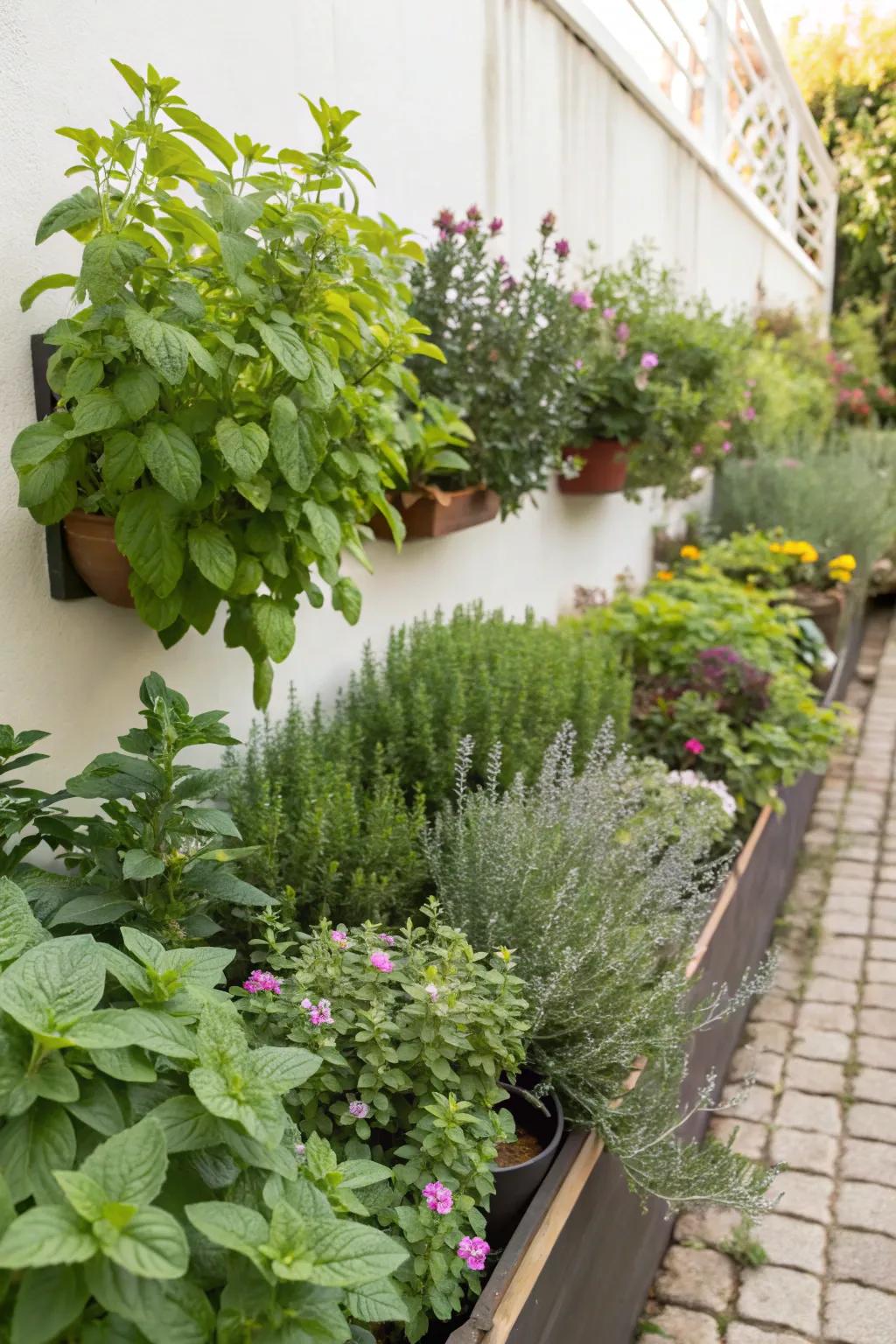
Turn a plain wall into a fragrant herb garden. It’s practical, beautiful, and keeps fresh ingredients within arm’s reach.
A few suggestions:
- Wall-Mounted Herb Planters: Install these planters to easily create a lush, vertical herb garden right on your wall.
- Self-Watering Pots: Choose self-watering pots to effortlessly maintain your herb garden’s hydration needs.
- Herb Garden Soil Mix: Use quality soil mix to ensure optimal growth for your wall-mounted herb plants.
17. Living Walls
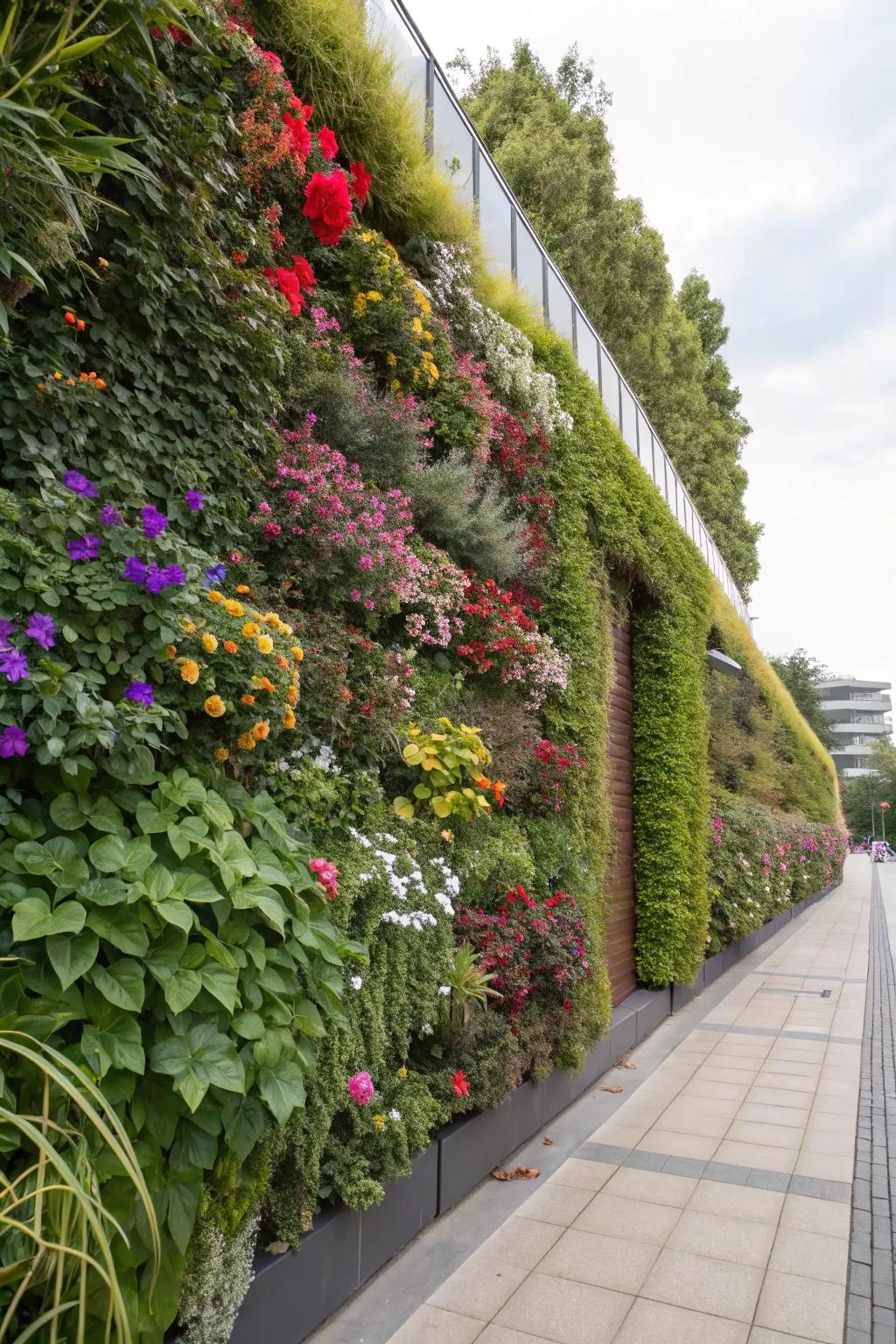
Create a living wall that doubles as a flower bed. It’s a stunning way to bring vertical life and color to any bare wall in your garden.
Explore these options:
- Vertical Wall Planters: Transform your garden with easy-to-install vertical wall planters for stunning floral displays.
- Wall-Mounted Planting System: Create a lush, green backdrop by installing an efficient wall-mounted planting system today.
- Self-Watering Vertical Garden: Enjoy hassle-free gardening with a self-watering vertical garden that keeps plants hydrated.
18. Lattice and Climber Combo
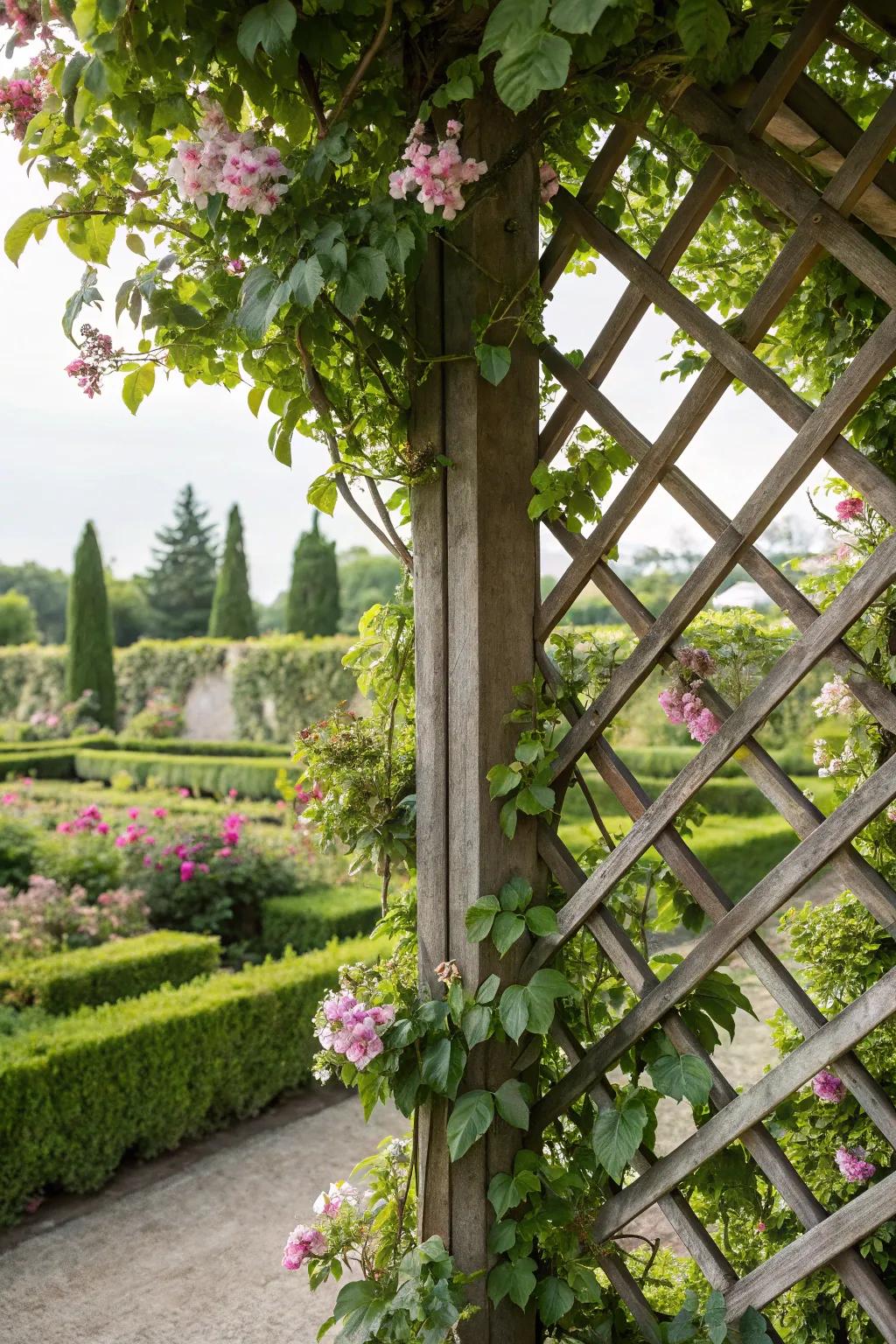
Combine a lattice with climbers for a romantic touch. It’s an effortless way to add height and interest while offering a home for beautiful vines.
You might like:
- Wooden Garden Lattice: Enhance your garden’s elegance with a wooden lattice, perfect for supporting flowering climbers.
- Climbing Rose Plants: Introduce a touch of romance with climbing roses that thrive on your lattice structure.
- Plant Training Clips: Keep your climbers neat and tidy with easy-to-use plant training clips for secure growth.
